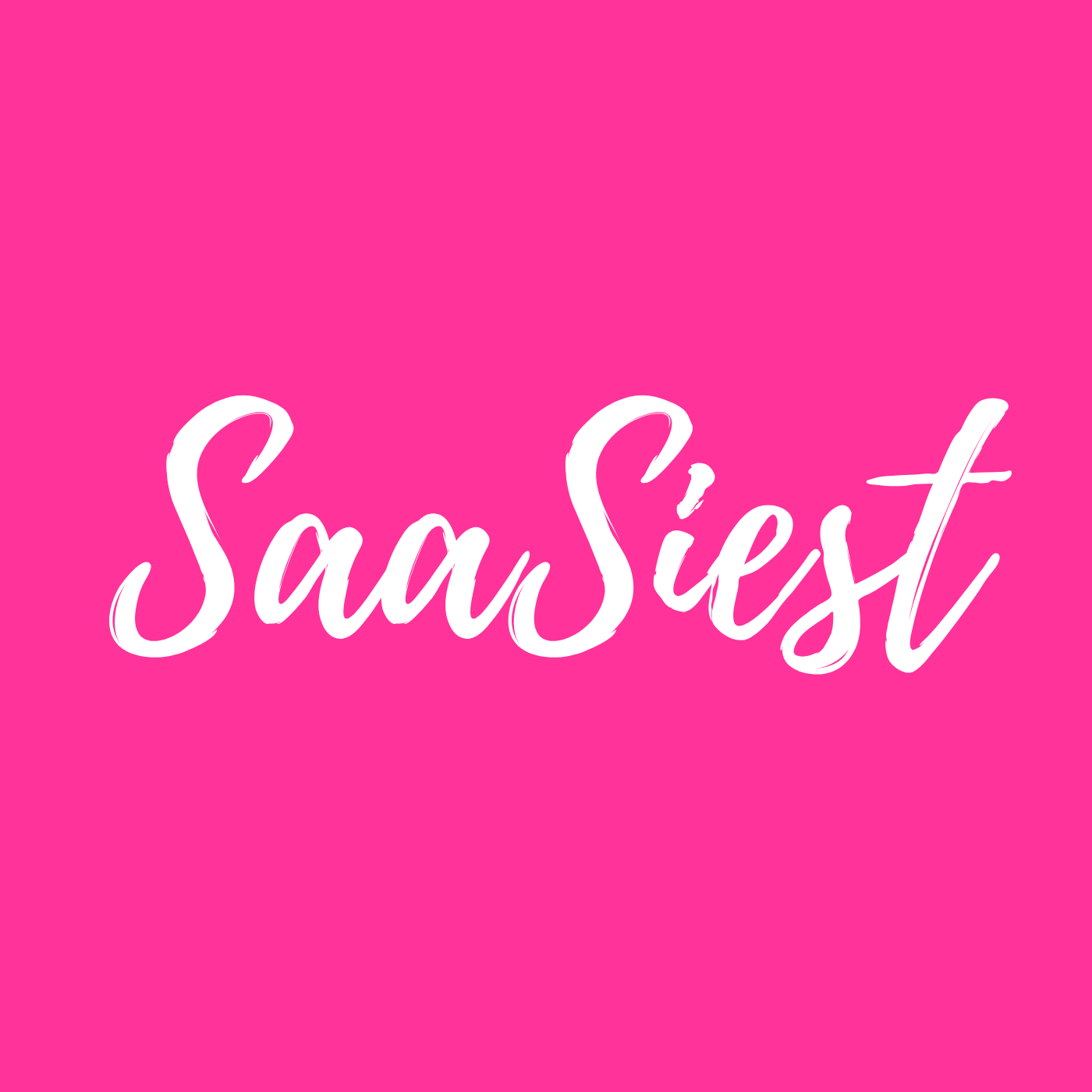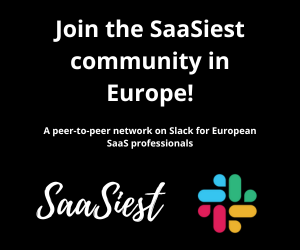The next frontier of SaaS: building trust at scale
Every SaaS company claims to be data-driven. But few turn that data into a defensible advantage.
According to Stijn Christiaens, Co-Founder and Chief Data Citizen at Collibra, the companies that will thrive in the AI era are those that treat governance not as a technical layer — but as a shared responsibility.
“AI isn’t terrifying because of Terminator,” Stijn joked at SaaSiest Amsterdam 2025. “It’s terrifying because of AI slop. Without humans in the loop, it’s going to make a big mess.”
Seventeen years after founding Collibra, Stijn has seen the data revolution from every angle. What started as a Belgian startup selling to a buyer that didn’t yet exist — the Chief Data Officer — is now a global leader in data intelligence and AI governance.
The story of how they got there offers a playbook for any SaaS founder navigating growth, reinvention, and disruption.
When your market doesn’t exist yet
In 2008, when Collibra launched, the Chief Data Officer role barely existed. “We were selling to a buyer that didn’t exist yet,” Stijn recalled. “There were maybe 15 CDOs in the world. Today, there are over 150,000.”
The company didn’t invent the market. It evolved with it — learning to serve a customer that was still being defined. Rather than over-engineer features, Stijn and his co-founders built adaptability into their DNA.
That flexibility became their first moat. When the data governance wave hit, they were already there — ready to catch it.

Governance isn’t a feature. It’s an operating system.
Most enterprises treat governance as a technical or compliance problem. Stijn argues that’s exactly why it fails.
“Organizations think they can govern data in small pockets — a few tools, a few teams. But fragmentation kills trust. Governance is an organizational challenge, not a technical one.”
This belief shaped Calibra’s entire product architecture. Instead of building another catalog or data warehouse, they built a platform that connected data ownership, process, and accountability across the business.
Their approach turned governance into a company-wide practice — a foundation for trust and collaboration rather than a barrier to speed.
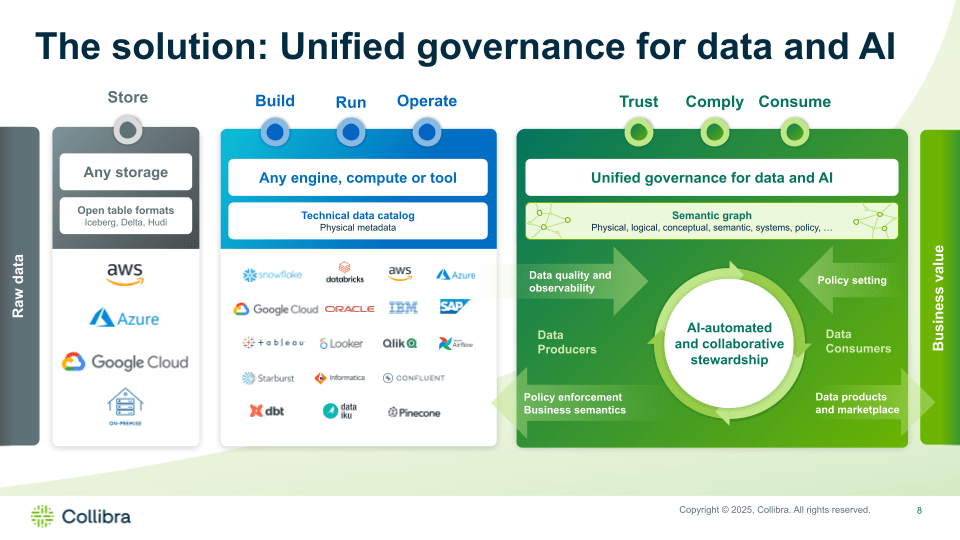
Building through mistakes (and mirrors)
Collibra’s founding team was full of engineers — brilliant builders but poor sellers. “We thought we had a complementary team,” Stijn admitted, “but we were all engineers. We didn’t sell anything.”
The turning point came when they brought in a commercial co-founder and a proper board. What they once feared would “slow them down” ended up saving the company from bankruptcy — more than once.
“Every founder I meet who avoids getting a board tells me it will slow them down. Then I meet them 18 months later… usually bankrupt.”
That outside perspective became Collibra’s accountability mirror — forcing them to face hard truths about their product, go-to-market, and market timing. It’s a reminder that sustainable growth doesn’t come from code alone. It comes from feedback loops — both internal and external.
From product sprawl to focus
Like many scaling SaaS companies, Collibra once tried to be everything to everyone. Their early messaging claimed expertise in multiple software categories — from governance to quality to analytics.
The result?
“In Germany, nobody came to our booth for two days,” Stijn laughed. “We looked like experts in none.”
That moment sparked a critical pivot: from generalist data software to category-defining data governance. By narrowing their focus, Collibra didn’t just find product-market fit — they created the market itself.
The lesson is universal: in SaaS, saying “no” with conviction can be more strategic than launching ten new features.
Strategy is a rhythm, not a retreat
Stijn has little patience for corporate buzzwords.
“Some people say they’re working on strategy. I’ve never known what that means, except that they’re probably doing nothing.”
For him, strategy isn’t a PowerPoint. It’s a rhythm — a quarterly habit of reflection, alignment, and relentless execution. Every few months, the Collibra leadership team meets offsite, looks back at what worked, sets direction for the next quarter, and then simply gets to work.
That cadence helped the company survive multiple transitions — including the decade-long rebuild from on-prem to SaaS, which saw them lose customers but gain long-term scalability.
Winning the right market, not just any market
Building a global SaaS company from Belgium meant one thing: they needed to win North America.
“We didn’t have money to do it, so we prospected for five years,” said Stijn. “It was brutal on the home situation. But it was the right call.”
Once they landed enough traction to expand, costs tripled — but so did opportunity. Being close to the enterprise decision-makers they served unlocked exponential growth.
For today’s founders, that lesson is timeless: know which market matters most to your category, and commit to it fully.
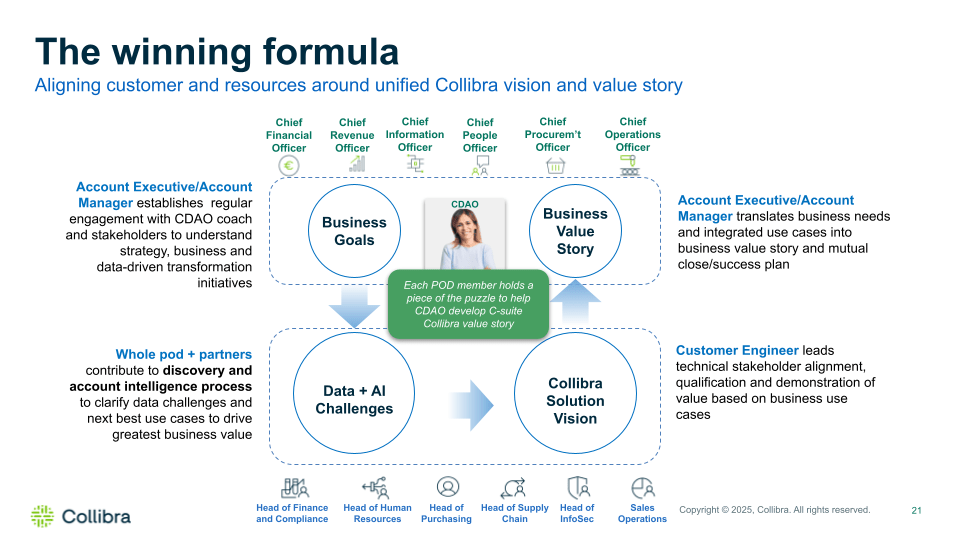
Seeing beyond the product
A management professor once taught Stijn a simple but profound idea: customers don’t buy a product; they buy a solution.
That solution includes the technology, the documentation and support around it, the way you sell and partner, and the brand you build.
“When we invested in brand,” said Stijn, “it changed how customers perceived our value. Especially in the US — you need marketing dollars to match your ambition.”
That shift reframed Collibra from a software vendor into a trusted advisor — a subtle but powerful difference for enterprise sales.
Building relationships before revenue
Stijn often asks one deceptively simple question:
“What’s the difference between a prospect and a customer?”
His answer: none.
By treating every interaction as if the person were already a customer, Collibra built deeper relationships and longer-term trust. It’s a mindset that transforms sales from transactional to relational — something every SaaS company scaling beyond €10M ARR needs to master.
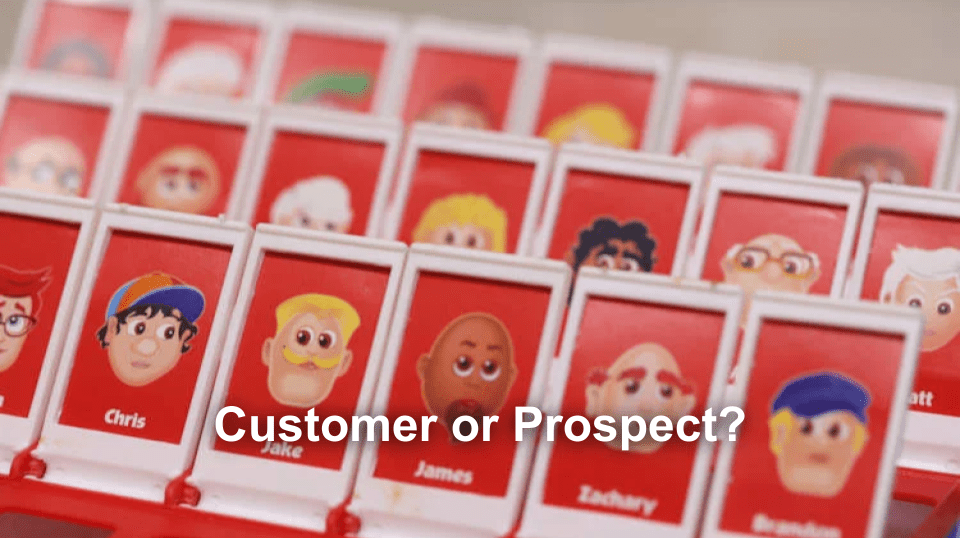
Partnering for patience
Stijn’s candor extends to partnerships too. “You need patience to partner — three-year horizons, not quarterly ones.”
Collibra learned this firsthand working with AWS, Google, and Microsoft — all partners, and at times, competitors. The key is to think symbiotically, not defensively. Partnership is not about quarterly pipeline; it’s about shared ecosystems that compound value over years.
Riding the AI wave without losing your footing
Technology evolves in waves: mainframes, web, cloud, SaaS — and now AI. Each wave creates opportunity, but also chaos.
Stijn’s advice for SaaS leaders in the AI era is pragmatic:
“Don’t plan your business on what’s going to change. Plan it on what’s going to stay the same.”
For Collibra, that constant is trust. As AI accelerates, companies will need new guardrails for how data is used and models are governed.
That belief led Collibra to its next transformation: from data governance to AI governance.
They call it unified governance — bringing data, analytics, and AI together under one framework of responsibility and control.
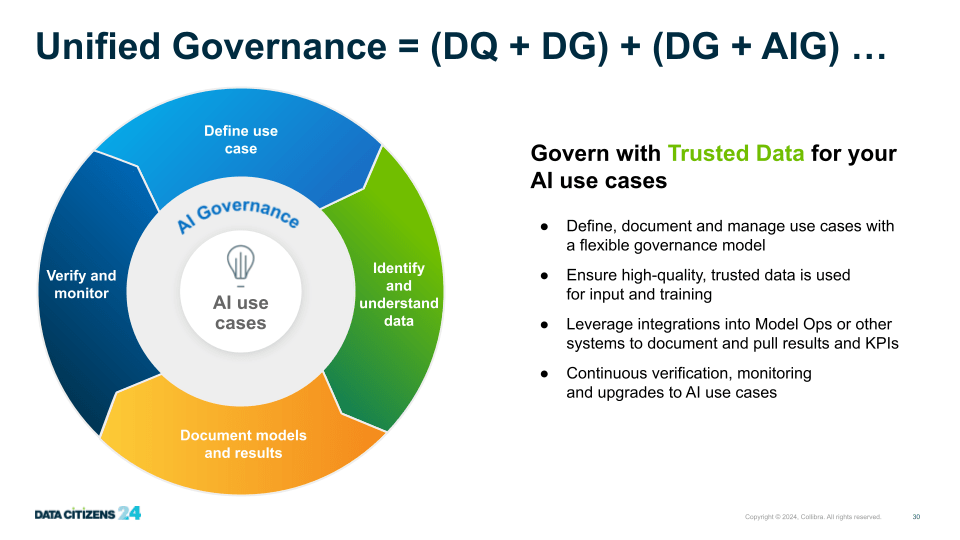
The shark that never stops swimming
Seventeen years in, Stijn still feels like Collibra is just getting started.
“Technology companies are like sharks. If they stop swimming, they die.”
From weathering financial crises to navigating hyperscaler competition, Collibra’s story is proof that enduring companies don’t just chase trends — they keep evolving their core.The future of SaaS isn’t about more automation or faster AI. It’s about scaling trust, accountability, and adaptability.
And in that race, Collibra isn’t slowing down.
🎥 Watch Stijn’s full keynote from SaaSiest Amsterdam here

